Price comparison sites provide better visibility, improves conversion rates and opens up more marketing channels for e-commerce platforms

India is second only to China in the Asia Pacific region in term of online sales and e-commerce market expansion. It shouldn’t really come as a surprise considering:
- The overall population of the country (which is expected to peak)
- Disposable income
- Fast growing internet connectivity
- Vast amount of mobile phones shipped each year
In fact, the revenue from sales through mobile phones is predicted to grow from 63 per cent in 2016 to 78 per cent by 2021, according to a study conducted by analytics firm Forrester. The report goes on to suggest that close to one-fifth of all sales in the Asia Pacific region would come through online channels. There has been a huge paradigm shift in the way people shop. The average Indian shopper spends more time online than in a physical store.
The open market space online offers plenty of options to choose from, without putting the extra effort of actually visiting a physical store. With online retailers mushrooming the Indian e-commerce space, international players like Amazon are coming up with campaigns like the Great Indian Sale and Fashion Wardrobe Refresh Sale with amazing offers and discounts in a bid to retain older customers and acquire new ones. Homegrown online retailers and marketplaces like Flipkart, Jabong, and Myntra aren’t shying away either. Recently Flipkart celebrated the 10th anniversary in the industry with Big 10 Sale campaign offering upto 50 per cent off on mobile devices and up to 90 per cent off on fashion products.

Now, you must be wondering that’s all fine and dandy but what does it have to do with price comparison portals? Well, as the title suggests, in India the e-commerce industry goes hand in hand with these portals. Sharing a sort of ‘you scratch my back and I’ll scratch yours’ relationshpi, both the industries are mutually benefiting each other. How, you ask?
Let’s start with what exactly is a price comparison portal/service and how does it work.
What is a price comparison portal, and what does it do?
Price comparison portals help the consumer compare the price of two products belonging to the same category and purchase accordingly. According to most reports, these price comparison websites and services that monitor various products appeared onto the scene somewhere around 2006. A lot has changed since then. For one, there have been numerous startups which offer price comparison services across different verticals from fashion to electronics and more. The way the data is assembled for comparison has changed and so has the way the payment is done by the retailers to get their products listed.
Also read: Amazon has officially launched Prime Now in Singapore
- Previously, the data required for comparison like the price and features, etc., would be collected manually. But with the technological advancement, comparison portals have starting using crawlers to gather data in real time, thus adding more value to the comparison displayed.
- The merchants and retailers used to deal with the comparison portals on a pay-per-click model, i.e. the payment was done only when a consumer or potential buyer would click on the listing, rather than just pay for putting the retailer in the comparison listing.
- For one company which offered price monitoring and comparison services back then, we have double the number as of now.
How does it benefit the user?
Basically what a price comparison engine does is take your inputs, scrape through the retailer or merchant’s site and display the results, from which you can later on choose your pick. The web crawlers are used to collect the data from merchant and affiliate sites using real time scraping techniques.
Now, before we dig deep and see how the symbiotic relationship between price comparison portals and e-commerce actually works, here are a few of the most popular price comparison portals in India:
91Mobiles
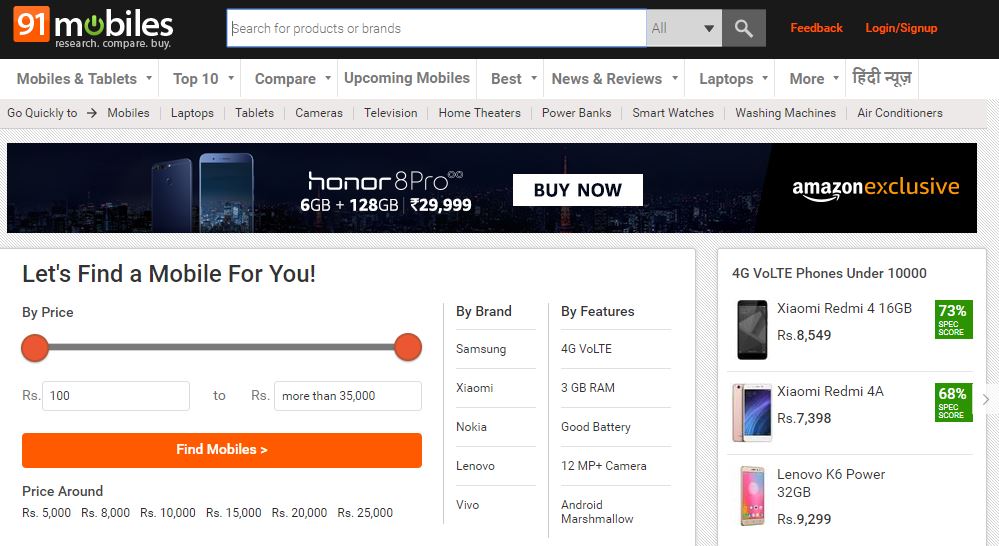
MySmartPrice
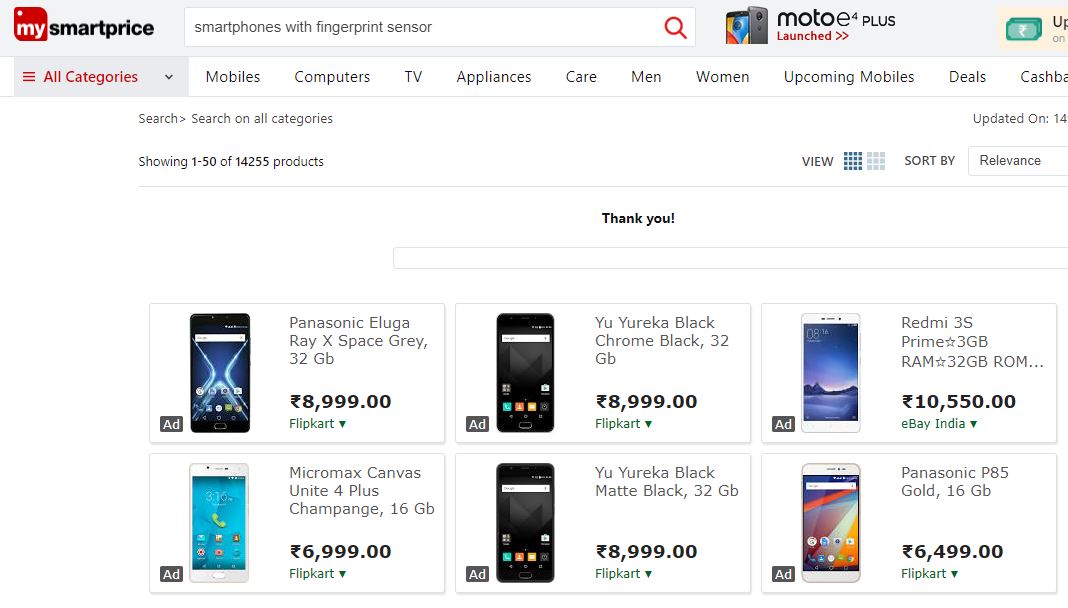
CompareRaja
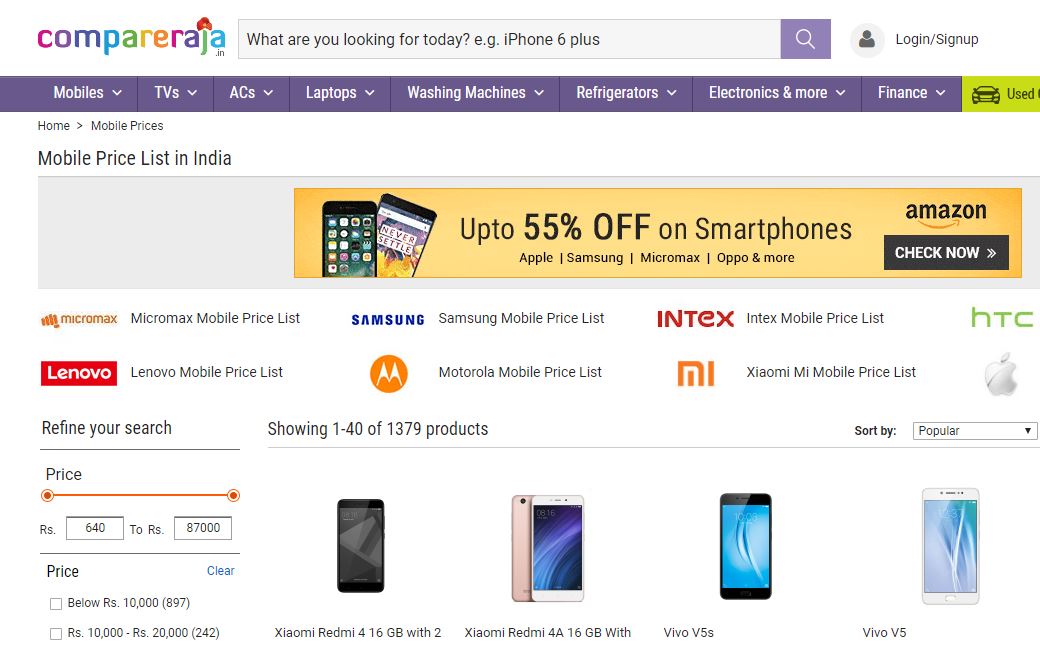
SmartPrix
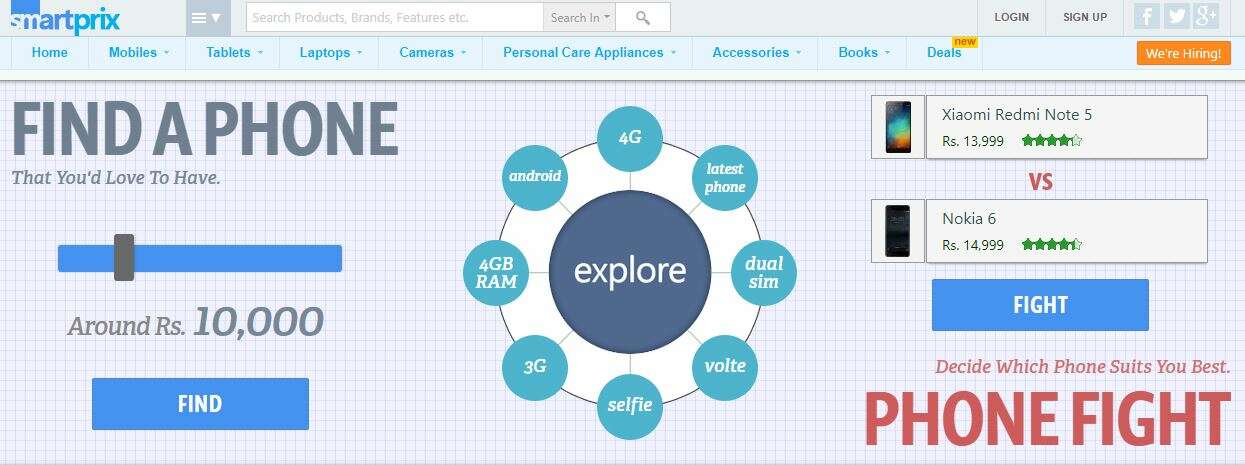
BestPriceOn
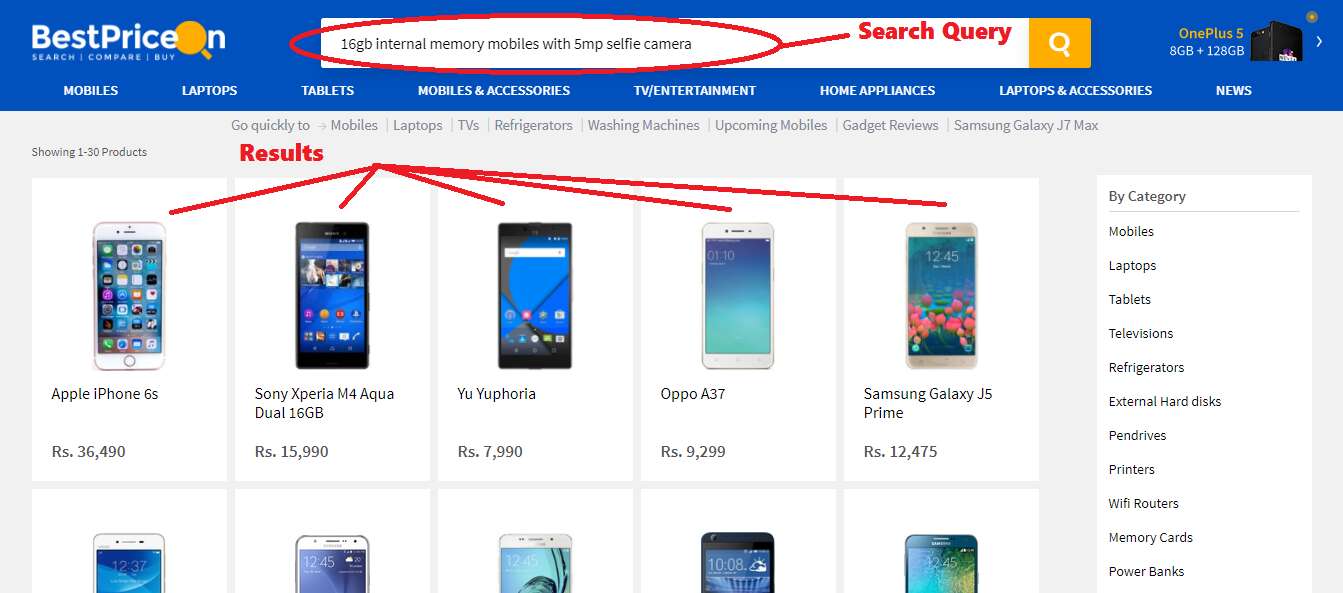
How price comparison helps the Indian e-commerce industry
- Providing more visibility and leads to the smaller startups
It’s tough for smaller startups to compete with large retailers like Amazon. But thanks to price comparison portals showing difference in prices across all merchant segments the small guys get the benefit of showing up and even acquiring customers. - Improving the conversion rates
The e-commerce industry as a whole receives a sizeable chunk of traffic without buying intent. But the users landing on a price monitoring site have pretty much made up their mind to buy a certain product and this drives the click to conversion ratio through the roof! - Opening up more marketing channels and driving more site traffic
The majority of the price comparison websites in India partner up with specific retailers or sellers and this not only offers more marketing channels but also brings in more traffic to the seller’s site. Not to mention the special deals offered, help in spreading the word of mouth around the market thus getting the retailer more sales and building a loyal customer base.
Also read: Amazon entry in Southeast Asia is an immense opportunity for startups that can adapt
This symbiotic relationship also provides the smaller players, eg. price comparison startups, a chance to gauge the competition and see what areas can be improved upon, thus adding a unique selling point to the portfolio.
As mentioned in the beginning, the e-commerce industry in India continues to grow, and as such the price comparison space is getting crowded. This means innovate or succumb to the competition. One key area in the price comparison, monitoring and product discovery industry that could use some serious innovation is search.
For example: You’re searching for 16GB internal memory mobile phones, the results should show you smartphones that have 16GB of internal memory not 16GB memory cards or USB flash drives. During my research on the topic, I noticed that one Indian website, BestPriceOn, has successfully implemented Artificial Intelligence (AI), Machine Learning (ML) and Natural Language Processing (NLP) in its comparison and discovery engine. These help understand the users’ behaviour thus yielding accurate results. Meanwhile the NLP allows the user to search in layman terms without adhering to technical jargons and exact string matches.
It is not alone in this technical innovation, many other startups in the space are quick to jump on this bandwagon of technical evolution. It’s safe to say that the price comparison industry is reinventing itself to better match the progress of e-commerce and the future for both in the Indian ecosystem shows absolutely no signs of stopping.
—-
Featured Image Copyright: ldprod / 123RF Stock Photo
The post E-commerce and price comparison portals in India have a symbiotic relationship, and could benefit more from innovations appeared first on e27.